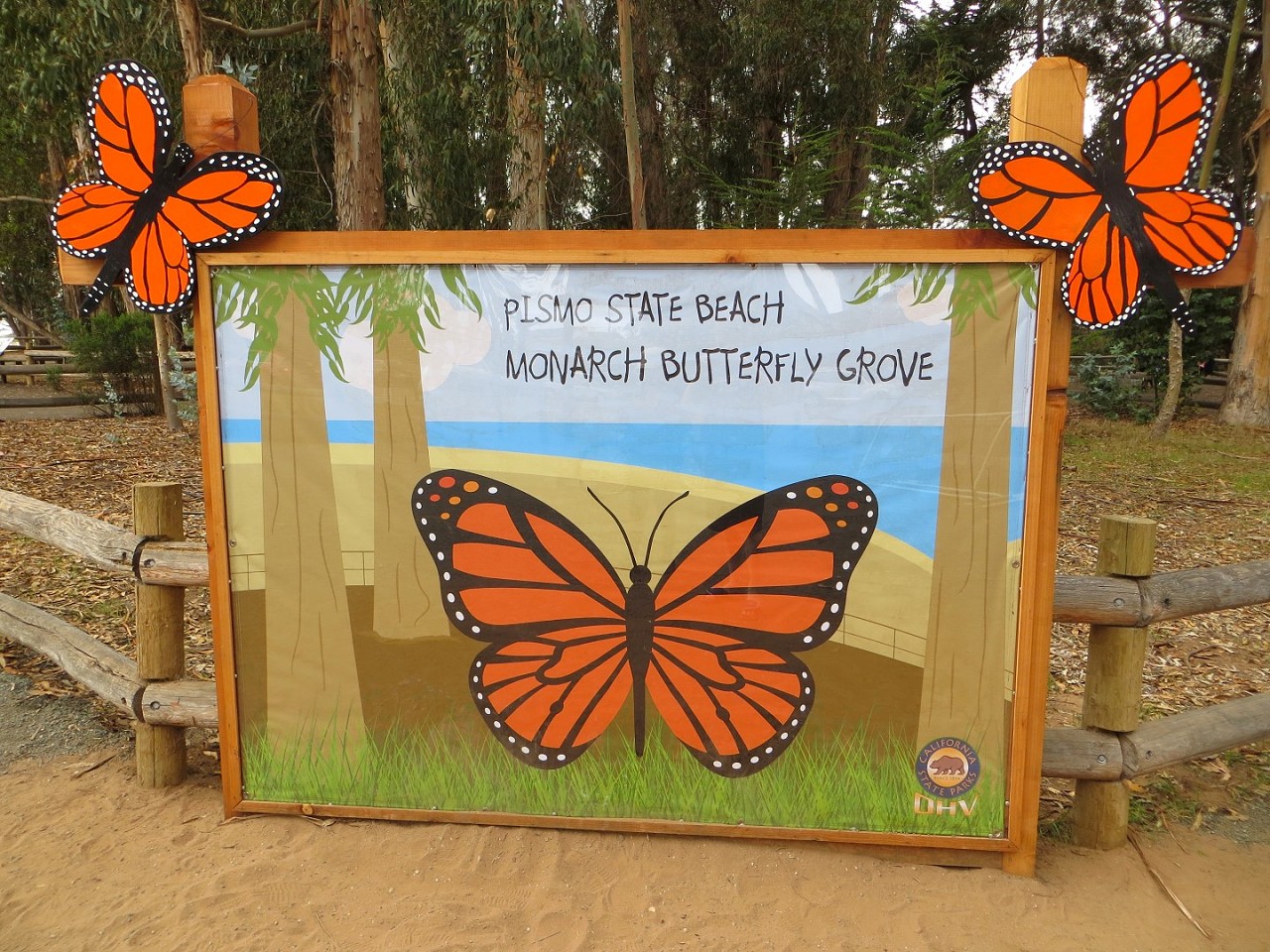


Eucalyptus tree–filled grove with thousands of monarch butteries in late October through February.
The Pismo Beach Monarch Butterfly Grove is one of only five sites in the state that has counts of over 10,000 butterflies annually. Each year thousands of vibrant orange and black Monarch Butterflies flock to Pismo State Beach, a location essential to their successful migration, seeking shelter from the freezing northern winters. From late October to February, the butterflies cluster in the limbs of towering, majestic Eucalyptus trees flanking a riparian estuary that flows to the Pacific Ocean. The grove is easily accessible from CA State Highway 1 at the south boundary of the city limits of Pismo Beach.
The Pismo State Beach Monarch Butterfly Grove is located half a mile south of Pismo Beach just off Hwy 1. The grove is open from late October through the month of February.
Beginning in late October, Monarch butterflies west of the Continental Divide migrate to the California Coast to overwinter and escape the frigid winter temperatures found in higher elevations. During this time, the Monarchs can be found clustering in large masses in coastal eucalyptus and cypress trees, in order to share their body heat and discourage predators. And although the lion’s share of these overwintering sites are located on private land, these three public Monarch viewing venues near Pismo Beach also offer good access for wheelchair-users and slow walkers.
Located just south of the North Beach Campground on Highway 1, the Pismo Beach Monarch Butterfly Grove (www.monarchbutterfly.org/ ) is home to one of the largest overwintering Monarch colonies in the area. In fact, the count from the 2016 season tallied the migratory population at over 28,000 butterflies.
There’s no marked parking for the grove, but parallel parking is available along Highway 1. From there, you’ll find curb-cut access to a hard-packed dirt trail that winds around to the eucalyptus grove. Volunteers are on duty during the season — from October to February — and spotting scopes are placed in the grove to help visitors get a closer look at the hibernating Monarchs. To be honest, the clumps of butterflies look like masses of dead leaves at first, but upon closer examination the Monarchs become more apparent.
There are also a number of interpretive panels around the grove, and docent programs are conducted during the hibernation season. And if you’d like to pack along a picnic lunch there are a few standard picnic tables located on level ground near the docent trailer. An accessible porta-potty is located nearby, and there’s also a nice selection of butterfly-themed merchandise available in the docent trailer. Truly, if you can only make one Monarch stop, this is the one to hit.

